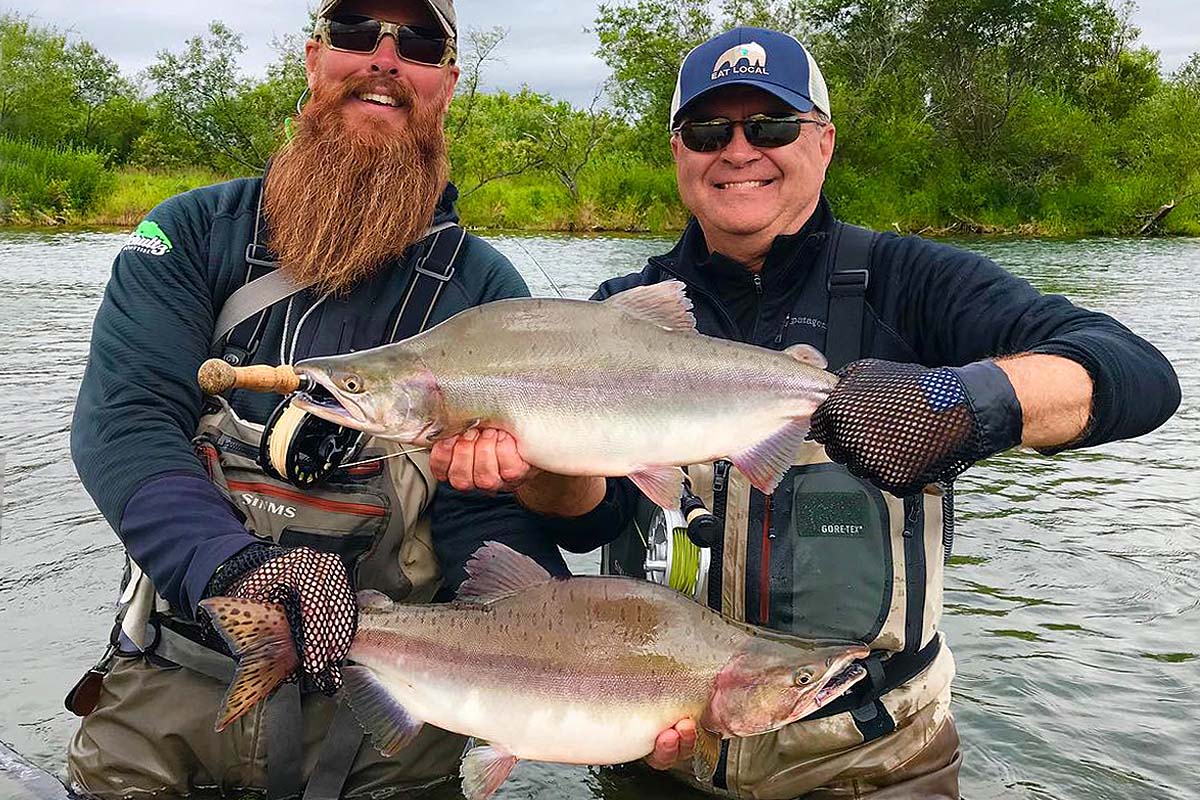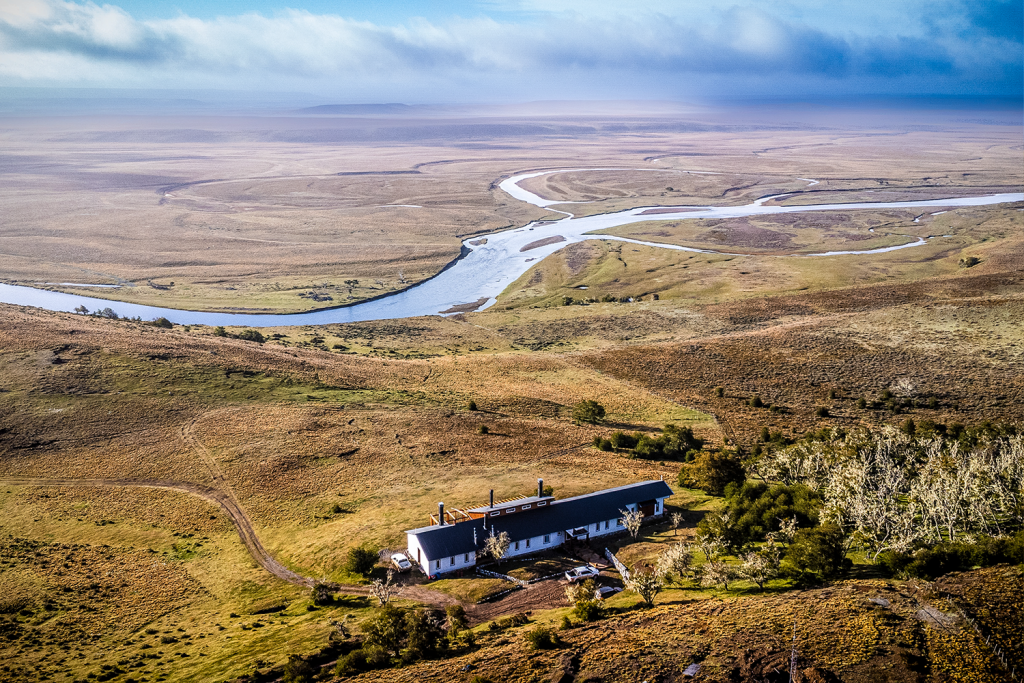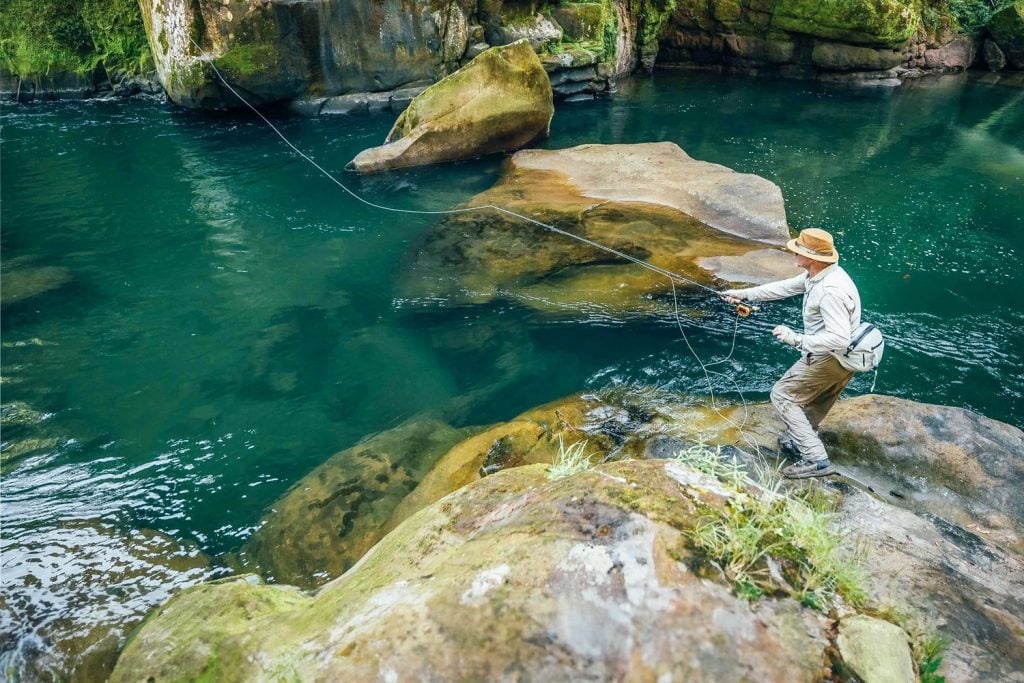Species: Pink Salmon
Scientific Name: Gorbúša
Also known as: Humpback Salmon, Humpie.
In the ocean, Pink Salmon are bright silver in appearance, but as they return to their spawning streams, their colour changes to a pale grey with a yellowish-white belly, with some even turning a greenish colour with hints of red across their bodies. In addition, most develop a range of small black oval spots on their back, flanks and fins. They feature a white mouth, black gums, v-shaped tail, and as with all Salmon, in addition to the dorsal fin, they also have an adipose fin. The male fish gets characterised by a pronounced hump which they develop during their spawning migration, which gives them their nickname of ‘Humpback Salmon’ or ‘Humpie’.
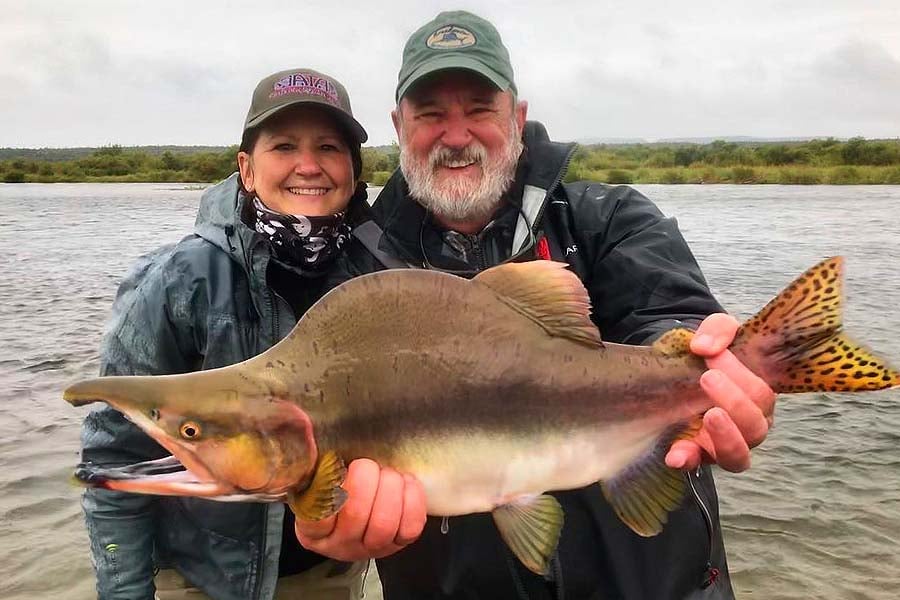

Pink Salmon only live for two years, and odd and even-year populations do not interbreed. Spawning usually occurs between late June and Mid-October and in the same coastal stream where the fish was born. Females can lay between 1,000 to 2,000 eggs, which they guard until death, often within days of spawning. Depending on water temperature, the eggs hatch from December to February, and the juvenile fish immediately make their way to estuaries and the nearest saltwater source. After two years, once they have achieved sexual maturity, they will return to the freshwater streams, and the whole process starts over again.
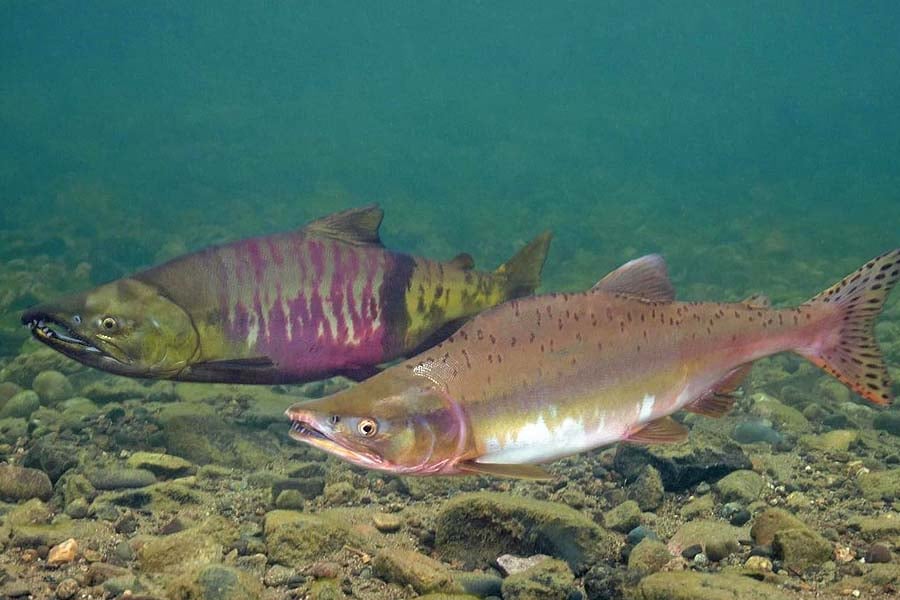

WHERE TO CATCH PINK SALMON
Pink Salmon are coldwater fish and prefer temperatures between 5.6 to 14.6 °C, an optimal temperature of 10.1 °C, and an upper incipient lethal temperature of 25.8 °C. They are relatively widespread, native to Pacific and Arctic Coastal Waters, from Canada, Alaska, Siberia, Korea and Japan, to name just a few. Through the years, they have been successfully introduced into the Great Lakes of North America and now have self-sustaining populations.
For anglers wishing to target Pink Salmon, Alaska and Canada are home to some of the world’s largest populations during spawning migrations. In Alaska, the Goodnews, Yukon, Nushagak, Agulawok, Kvichak, Naknek and Kanektok rivers all hold good numbers of fish. Whilst in Canada, the Skeena and Kalum rivers and their entire watersheds, alongside the Kitimat and its estuary, are some of the best in Canada.
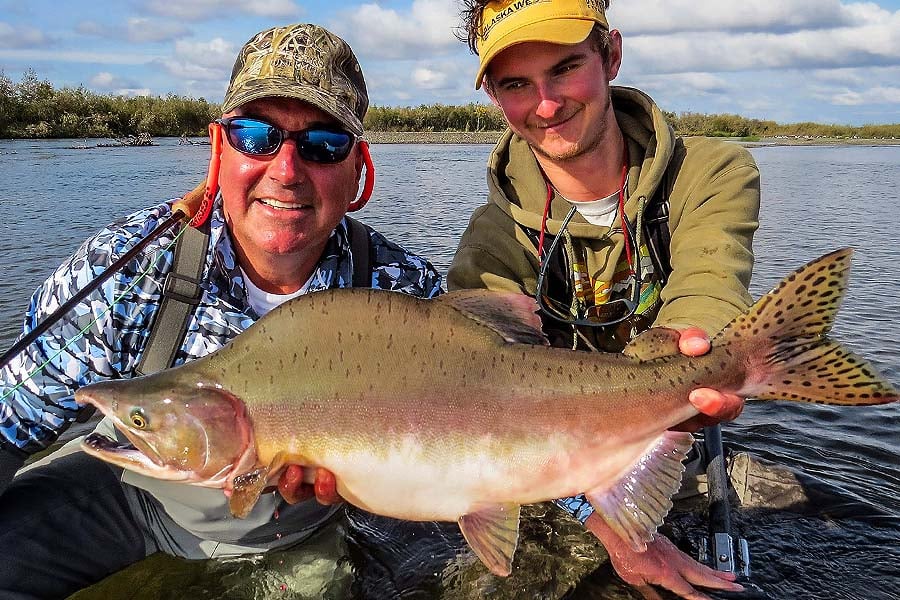

AVERAGE SIZE OF PINK SALMON
The Pink Salmon is the smallest of all Salmon species, and due to its short lifespan of only two years, it doesn’t grow much more significant than around 5lb. However, occasionally bigger fish between 5lb and 8lb get caught by anglers, and on rare occasions, fish even larger than that. According to the International Game Fish Association (IGFA), the world record is a whopping 14lb 3oz, landed on an artificial lure by nine-year-old Alexander Minerich in Monroe, Washington State, USA.
HOW TO CATCH PINK SALMON
Despite not growing very large, the Pink Salmon is still considered a great sportfish; its willingness to take lures and flies makes it an angler’s favourite. When running up the rivers from the ocean, they can provide some fantastic sport on balanced freshwater fly fishing tackle; they’re aggressive little fighters and tend to move in large numbers providing some non-stop action.
Pink Salmon can be caught on an array of different methods and will take fresh bait, with Salmon Eggs and Sand Shrimp the most popular, as well as lures and jigs, with the Marabou jig a favourite. However, globally they are mainly targeted by freshwater fly fishing anglers.
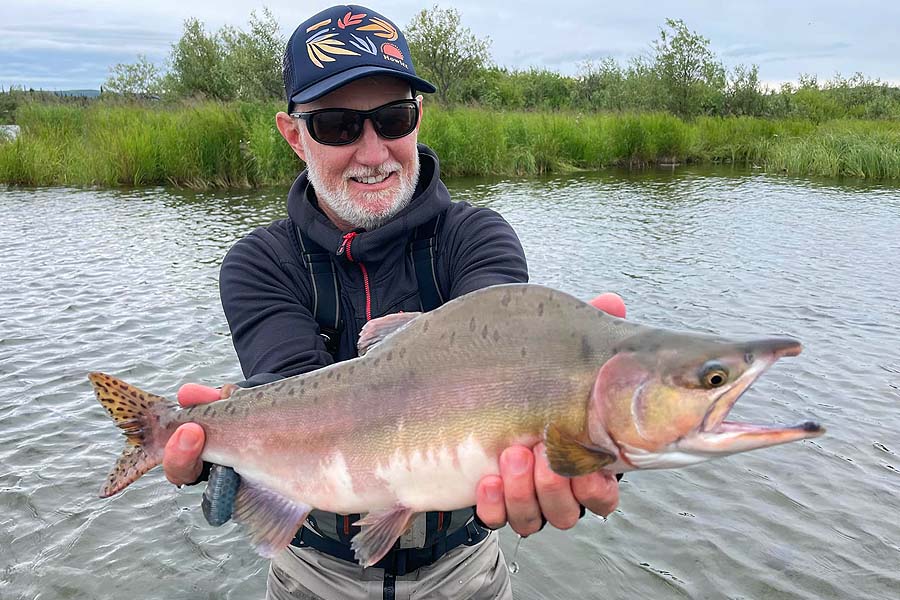

A single-handed 7-weight or 8-weight rod with fast action is the most popular, with an 8-weight providing a bit more backbone if your fly suddenly gets nailed by a big Silver. A good quality reel with a smooth drag is also essential, as the fish are straight from the ocean they have plenty of fight for their size. Weight-forward floating lines get used by 90% of anglers as the fish tend to run along shallow gravel bars or sit high in the water column when resting.
Fly-wise, many patterns work, especially those in the pink spectrum, and they certainly love a topwater offering. Tried and true producers include the Humpy Hooker, Lead Eyed Egg Sucking Leech, and the Pink Starlite Leech. Due to the fish having a habit of short-striking flies, it’s recommended to cut any materials down to the bend of the hook, as this can minimise missed strikes.
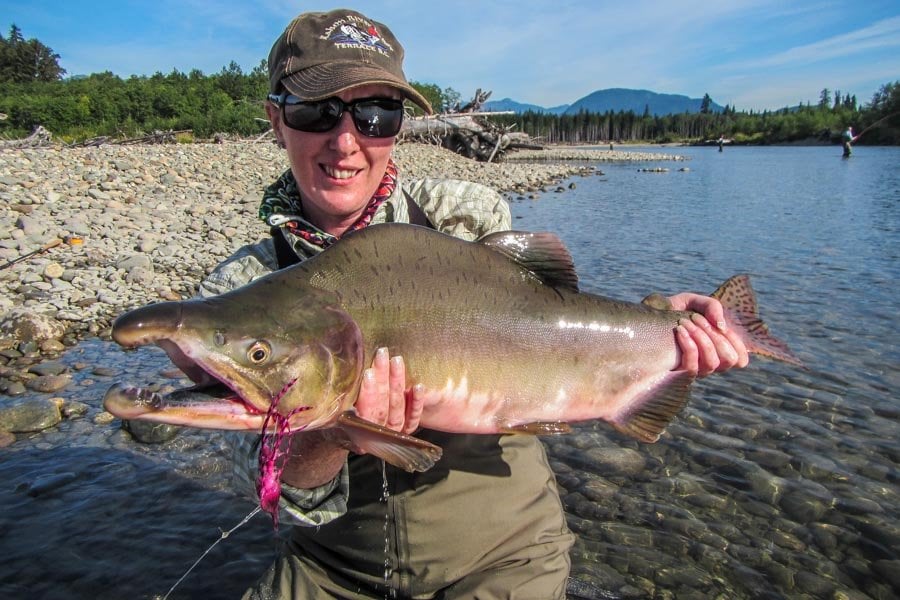

CONTACT US
If you’ve always wanted to catch a Pink Salmon on the fly, we have a range of destinations worldwide where we can make this happen. Our freshwater fly fishing lodges in Alaska and Canada are considered some of the best in the world, with some incredible fishing opportunities. If you’d like to learn more or enquire about a trip, contact Peter Collingsworth on 01603 407596 or via email at peter@sportquestholidays.com.
